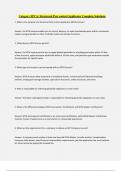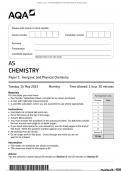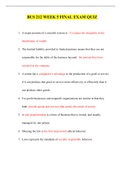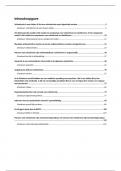Exam (elaborations)
Category SPCA: Structural Pest control Applicator Complete Solutions
Category SPCA: Structural Pest control Applicator Complete Solutions 1. What is the purpose of a Structural Pest Control Applicator (SPCA) license? Answer: An SPCA license enables you to control, destroy, or repel invertebrate pests and/or commensal rodents using pesticides or other methods i...
[Show more]






